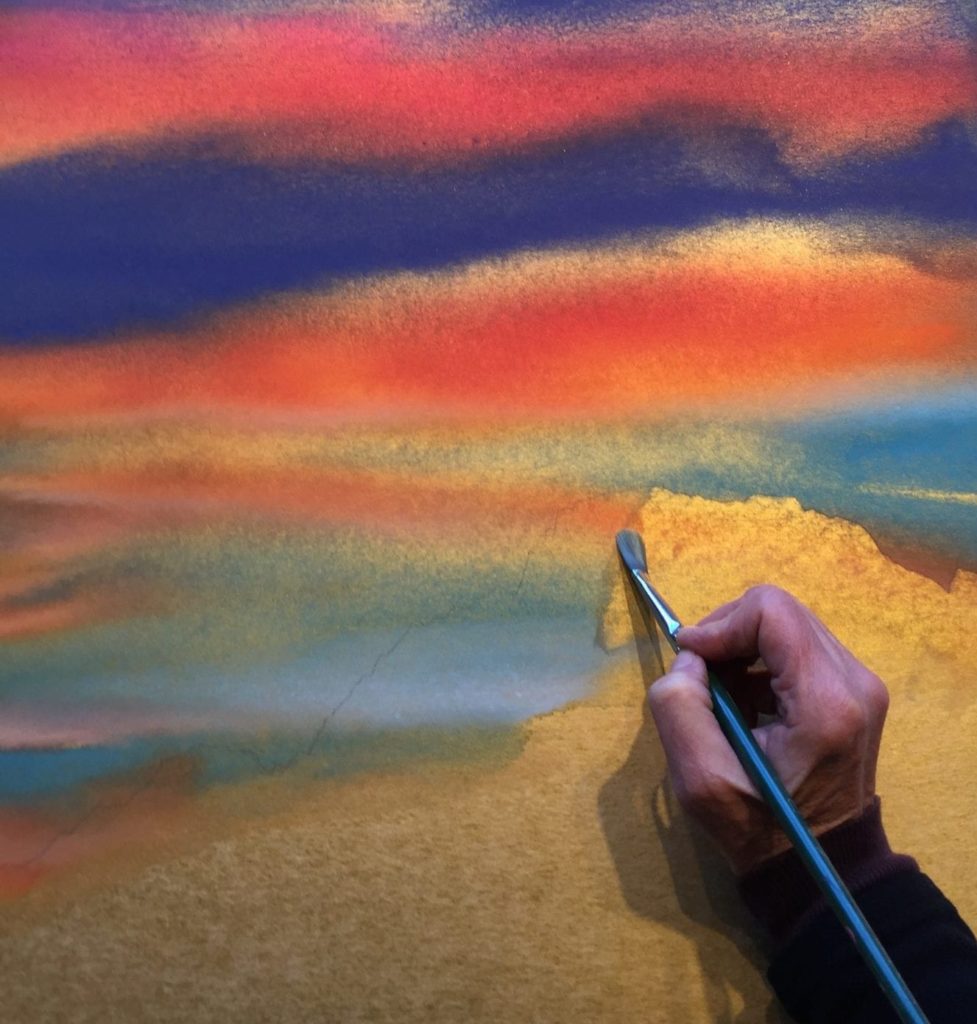Kay, P’o Mo and Sumi-e – Kay’s current work is derived from her experimentation with P’o Mo. Though compositional qualities and some of the unusual materials used in Sumi-e still influence her work she has created a contemporary style and technique – her artistic “fingerprint”- all her own.
P’o Mo painting, or “splash ink” painting, is an ancient Chinese technique, though the results look contemporary. Thickened watercolor or ink is poured onto rice paper or a gold or silver leafed “shikishi” board. A shikishi board is a paper board, covered with a metallic sheet, then covered with a very sheer piece of rice paper, with the edges of the board finished in gold trim. The color is manipulated with brushwork and by tipping and allowing the puddles of paint to blend and bleed. The painting is left to dry and then is continued by defining areas with brushwork to reveal a more recognizable image – usually a landscape, but a figure or a floral painting could be the result also.
Sumi-e is the art of Asian brush painting, literally translated as ink (“sumi”) painting (“e”), and pronounced soo-me-a. This is a very ancient art, which portrays traditional subjects and specific techniques using special equipment and papers. Sumi-e paintings are simple in composition and are full of harmony, overall balance and peace. More important than the representation of a subject is the expression of its mood and spirit – its “essence”. It is this essence that Kay has retained as she has moved from traditional Sumi-e to her own personal style and technique.
![]()
Kay’s “chop” represents a Chinese saying: “If I keep a green bough in my heart, the singing bird will come.” She uses this unique chop, which she designed, as her signature on every painting.

